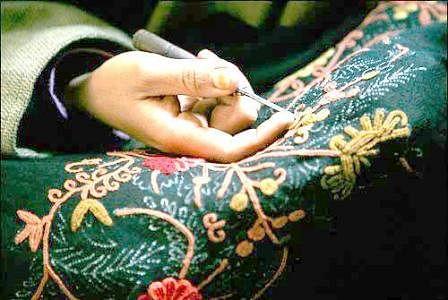Darjeeling tea was lucky enough to get a first GI tag in 2004. Presently, in India more than three hundred objects gained GI tags and among them it is handicraft goods that received maximum GI. This is followed by the agriculture sector in broad form and horticulture sector in specific form. In fruit crops banana, mango, and citrus got the highest GI labels. Top genetic replicas of fruit crops such as fig, litchi, grape, strawberry, pineapple, guava etc. were also successful in getting GI. Apart from fruits many daily used vegetables too gained GI. Every sector of the economy is an important driver of its good and development. But, some sectors are more important as they provide inputs to industrial development. Agriculture sector too is significant as it is the main source of raw material to the manufacturing sector. Neolithic period or New Stone Age is the next stage from about 10000 years ago and characterized by the development of settled agriculture and the use of tools made of polished stones. History is witness to the fact that all those civilizations where agriculture was dominant geared its development and welfare prospects. Economies of present day are no exception. Agriculture sector is the binding and complementary force in every economy which boosts indigenous sectors. It is generally related with handloom and handicraft for agriculture development and rural economic growth. Both handloom and handicraft sectors provide income and employment to rural masses. To get more and more geographical indication in both sectors is a blessing and need of the hour for underdeveloped agricultural economies of the world.
After saffron, Government of India vigorously hunted GI registration of five more crafts for defining and ensuring the quality of them so that their marketing at national and international level market gets substantial boost. The crafts include Tweed fabric, Pashmina & Painting of Basohli, Chikri craft from Rajouri district, and Loi blankets from Kishtwar district. For the integrated development of the Indian Handicrafts sector there is an institute of craft development namely Craft Development Institute. It provides applicable craft education to young people and budding entrepreneurs. In addition, it plans employment prospects and makes it a suitable career choice. Moreover, it aims to revitalize the hand-made craft giving it a new light and hope alongside driving the handicrafts sector towards stimulation. It is the Nodal Agency for GI registration of Tweed fabric and Loi blankets. National Bank for Agriculture and Rural Development (NABARD) which is an apex development bank fully owned by Government of India shall enable GI registration of Chikri crafts and Basohli Pashmina & Painting. It will discuss policy, planning and operations pertaining to GI development of these crafts.
GI is a unique sign helping in the documentation of goods in the market. It can act as an effective marketing tool if handled properly. Since it aims at safeguarding goods from brand falsification and inauthenticity it therefore helps consumers by providing them sufficient and proper information regarding the definite origin and attributes of the goods. Accordingly, it will help handicraft users by offering them adequate knowledge pertaining to origin and attributes of their craft. GI registration which is accompanied by certification and labelling shall facilitate quality guarantee of these products coupled with the right to use the indication to stop its exploitation and misuse by unauthorised users or a third party whose product fails to adhere to the valid standards. It will definitely improve the handicraft sector (especially quality and marketing).
Department of Commerce, Ministry of Commerce & Industry, Government of India shall provide sufficient funding in order to develop a Testing-cum-Research-cum-Certification Centre for GI labelling and branding of products. For GI certification of carpets, the Government is in the process of advancement of the existing lab in the Indian Institute of Carpet Technology (IICT), Srinagar which provides necessary technical backing to the carpet industry of the erstwhile Jammu and Kashmir state. Authorities claim that GI certification shall boost export of legendary handicrafts products from Jammu & Kashmir and also reduce the sales and profits of fake, adulterated, and machine-made products in the name of handmade genuine products. Recently the Government of India directed all the administrative departments in erstwhile J&K to put forward a comprehensive framework of products that demands registration of Geographical Indication in order to strengthen indigenous industries producing local goods well-known for their excellence, characteristics, and name. Now, it is very important for all administrative departments that they develop a holistic model of their GI registered goods so that their export and marketing at both national and international markets gets better. The model should take account of characteristics, demand, and export of these goods. In addition, it should be a classic model of development because safeguarding GI as a model of growth and development will have dual effect: On one hand it will have the capacity to provide maximum social advantage to the region of its origin and on another hand, it will generate gainful employment to several different segments of the population apart from producers and end-users. Furthermore, it will strengthen our culture and traditions thereby making us aware about our roots and providing suitable knowledge about our old legendary goods that act as our assets and real wealth.
All high value commercial goods in general and indigenous goods in particular should get the chance of GI labelling. Commercial goods and crops are produced by and large for profits. They are an essential part of sustainable growth and development. Moreover, they generate income and employment for farm households which aids them to invest and save in a better and more efficient manner. GI on cash and commercial crops will have a catalytic outcome on agriculture reforms and innovations adding utility and value in agriculture and its allied areas.
Binish Qadri is ICSSR Doctoral Fellow in the department of economics, Central University of Kashmir; Quarterly Franklin Member, London Journals Press.






